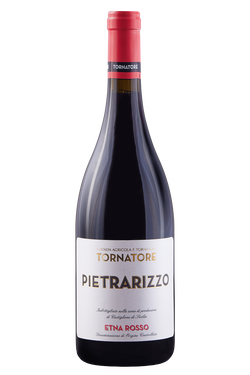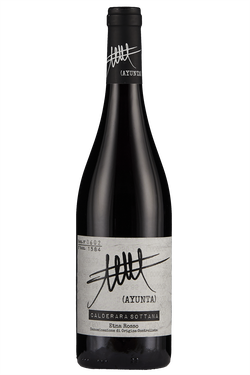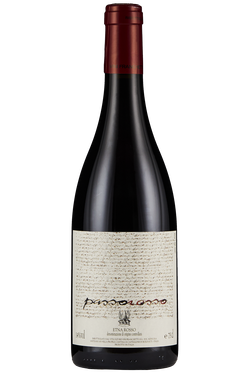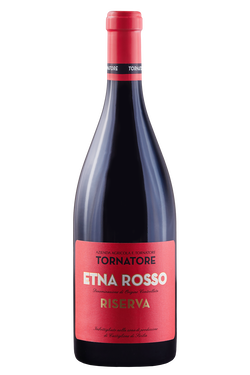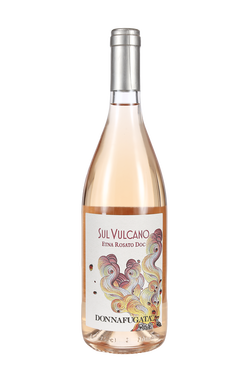The history of Etna Rosso
The history of Etna wines – Etna Rosso, Etna Bianco, and Etna Rosato – dates back to a distant time. Although it is said that the Greeks brought vines to Sicily, remains dating back to the time of the Phoenicians confirm dissemination of the plant on soil of the island before the Greek conquest. Thanks to the importation of tools, technology and more advanced cultivation techniques, including the traditional bush-training system, the Greeks improved the production of wine in the Etna area. The history of viticulture in Etna continued at an intense pace until it peaked in 1848. In fact, in that year, vineyard plantings on Etna amounted to over 25,000 hectares – a vast area compared with the few thousand hectares of vineyards present in the same area today. The vines were abandoned as a result of the frequent eruptions, the difficulty of viticulture, and above all phylloxera, an insect which came from the American continent and devastated the area from the mid-19th century to the early 20th century, and damaged more than 80% of European vines. Despite the very serious epidemic, some varieties of Etna managed to survive, probably thanks to the position and temperatures. In the early 20th century, however, Sicilian wines were once again used for blending the most prestigious French and Piedmontese wines, due to their strong ABV. In the second half of the 20th century, eventually, the golden opportunity came for Sicilian wines, first of all Nero d’Avola, followed closely behind by Etna Rosso. Despite being the oldest DOC designation of Sicily, the success of Etna Rosso is fairly recent, and it was intensified particularly in the 1990s. Today, on the slopes of the “muntagna” – the affectionate term the Sicilians use for Etna –, boasts almost 150 wineries producing excellent quality wines.
Characteristics of Etna Rosso
Etna is a unique ecosystem, which is often referred to as an “island within an island”. In fact, the peculiar characteristics of the territory are what make Etna Rosso unique among the red wines of Sicily. The true secret to the quality of Etna Rosso wine is the volcanic soil, stony and rocky or sandy and ashen, together with the age of the vineyards, some more than a hundred years old, and the temperature fluctuations, which can be as much as 25/30°C between day and night. These characteristics give Nerello Mascalese – the main variety in the DOC Etna Rosso zone – great minerality and distinct elegance. Etna Rosso, made from at least 80% Nerello Mascalese and Nerello Cappuccio grapes, is a ruby red wine, intense and characteristic on the nose, full-bodied and harmonious on the palate. Etna Rosso has an alcohol content of around 12.5% and the optimal serving temperature is between 18 and 20°C. The prestigious Etna Rosso Riserva DOC requires ageing for four years, including at least 12 months in wooden barrels.
Nerello Mascalese: the main variety of Etna
According to the protocol, Etna Rosso DOC – and also Etna Rosato DOC and Etna Spumante DOC – is produced mostly from Nerello Mascalese grapes, the main black grape variety of Etna. Nerello Mascalese is a native variety in the area, originating from Contea di Mascali. It is a difficult variety, which finds its habitat of choice on Mount Etna and struggles to thrive elsewhere. Because of its sensitivity to the territory, and also the growing year, it is often compared to Pinot Nero (Pinot Noir), and also Nebbiolo due to their late ripening. This is a variety that is traditionally bush trained, although the most widespread training method used today is the spurred cordon, which ensures a higher yield. This variety has a long cylindrical and moderately compact grape cluster, with thick-skinned grapes, of medium size and a very clear red colour. Its plant has a medium budbreak, around the third week of March, and its grapes are late ripening, between the second and third week of October. Wine produced with Nerello Mascalese, above all Etna Rosso, has a fairly high ABV and a strong predisposition for ageing.
Pairing Etna Rosso
The fairly high alcohol content makes Etna Rosso suitable for robust and substantial pairings. It is an excellent red wine for Sunday lunch, perfect for pasta – possibly homemade egg pasta – served with meat sauces, and also lasagne and grilled meat. For those who want a wine with character for an aperitif with friends, Etna Rosso is ideal paired with mature cheeses or antipasti in oil, such as sundried tomatoes or peppers. If you prefer the intense flavour of Etna Rosso Riserva DOC, the perfect pairings are those with mushrooms, truffle and game, but also black pork sausage. Etna Rosso is a wine that has very close ties to its territory. For this reason, and for its versatility, its ideal pairings are found in typical Sicilian recipes and flavours, above all Sicilian caponata, and also braciole alla messinese.



